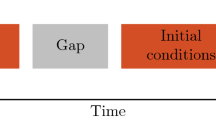Abstract
A common approach, adopted by most current research, represents users of a social media platform as nodes in a network, connected by various types of links indicating the different kinds of inter-user relationships and interactions. However, social media dynamics and the observed behavioral phenomena do not conform to this user-node-centric view, partly because it ignores the behavioral impact of connected user collectives. GitHub is unique in the social media setting in this respect: it is organized into “repositories”, which along with the users who contribute to them, form highly-interactive task-oriented “social collectives”. In this paper, we recast our understanding of all social media as a landscape of collectives, or “convos”: sets of users connected by a common interest in an (possibly evolving) information artifact, such as a repository in GitHub, a subreddit in Reddit or a group of hashtags in Twitter. We describe a computational approach to classifying convos at different stages of their “lifespan” into distinct collective behavioral classes. We then train a Multi-layer Perceptron (MLP) to learn transition probabilities between behavioral classes to predict, with high-degree of accuracy, future behavior and activity levels of these convos.
Access this chapter
Tax calculation will be finalised at checkout
Purchases are for personal use only
Similar content being viewed by others
References
Broadwell, G.A., Stromer-Galley, J., Strzalkowski, T., Shaikh, S., Taylor, S., Liu, T., Boz, U., Elia, A., Jiao, L., Webb, N.: Modeling sociocultural phenomena in discourse. Nat. Lang. Eng. 19, 213–257 (2013)
Strzalkowski, T., Harrison, T., Sa, N., Katsios, G., Khoja, E.: GitHub as a social network. In: International Conference on Applied Human Factors and Ergonomics, pp. 379–390. Springer (2018)
Oliveira, A.W., Boz, U., Broadwell, G.A., Sadler, T.D.: Student leadership in small group science inquiry. Res. Sci. Technol. Educ. 32, 281–297 (2014)
Beebe, S.A., Masterson, J.T.: Communicating in Small Groups: Principles and Practices. Scott, Foresman, Glenview (1986)
Huffaker, D.: Dimensions of leadership and social influence in online communities. Hum. Commun. Res. 36, 593–617 (2010)
Bakshy, E., Hofman, J.M., Mason, W.A., Watts, D.J.: Everyone’s an influencer: quantifying influence on Twitter. In: Proceedings of the 4th ACM International Conference on Web Search and Data Mining, pp. 65–74. ACM (2011)
Cheng, J., Adamic, L., Dow, P.A., Kleinberg, J.M., Leskovec, J.: Can cascades be predicted? In: Proceedings of the 23rd International Conference on World Wide Web, pp. 925–936. ACM (2014)
Hofman, J.M., Sharma, A., Watts, D.J.: Prediction and explanation in social systems. Science 355, 486–488 (2017)
Martin, T., Hofman, J.M., Sharma, A., Anderson, A., Watts, D.J.: Exploring limits to prediction in complex social systems. In: Proceedings of the 25th International Conference on World Wide Web, pp. 683–694. International World Wide Web Conferences Steering Committee (2016)
Strzalkowski, T., Broadwell, G., Stromer-Galley, J., Shaikh, S., Taylor, S.: Modeling leadership and influence in online multi-party discourse. In: COLING Conference, pp. 596–617. Mumbai, India (2012)
Tsay, J., Dabbish, L., Herbsleb, J.: Influence of social and technical factors for evaluating contribution in GitHub. In: Proceedings of the 36th International Conference on Software Engineering, pp. 356–366. ACM (2014)
Casalnuovo, C., Vasilescu, B., Devanbu, P., Filkov, V.: Developer onboarding in GitHub: the role of prior social links and language experience. In: Proceedings of the 10th Joint Meeting on Foundations of Software Engineering, pp. 817–828. ACM (2015)
Pearson, K.: Liii. On lines and planes of closest fit to systems of points in space. The Lond. Edinb. Dublin Phil. Mag. J. Sci. 2, 559–572 (1901)
McInnes, L., Healy, J.: Accelerated hierarchical density based clustering. In: Data Mining Workshops (ICDMW), IEEE International Conference, pp. 33–42. IEEE (2016)
Johnson, N.L., Kotz, S., Balakrishnan, N.: Discrete Multivariate Distributions. Wiley, New York (1997)
Agresti, A.: An Introduction to Categorical Data Analysis. Wiley, Hoboken (2018)
Rosenblatt, F.: Principles of neurodynamics. Perceptrons and the theory of brain mechanisms. Technical report, CORNELL Aeronautical Lab Inc Buffalo, NY (1961)
Hahnloser, R.H., Sarpeshkar, R., Mahowald, M.A., Douglas, R.J., Seung, H.S.: Digital selection and analogue amplification coexist in a cortex-inspired silicon circuit. Nature 405, 947 (2000)
Glorot, X., Bordes, A., Bengio, Y.: Deep sparse rectifier neural networks. In: Proceedings of the 14th International Conference on Artificial Intelligence and Statistics, pp. 315–323 (2011)
Hyndman, R.J., Koehler, A.B.: Another look at measures of forecast accuracy. Int. J. Forecast. 22, 679–688 (2006)
Acknowledgments
This work was supported by the Defense Advanced Research Projects Agency (DARPA) under Contract No FA8650-18-C-7824. All statements of fact, opinion or conclusions contained herein are those of the authors and should not be construed as representing the official views or policies of AFRL, DARPA, or the U.S. Government.
Author information
Authors and Affiliations
Corresponding author
Editor information
Editors and Affiliations
Rights and permissions
Copyright information
© 2020 Springer Nature Switzerland AG
About this paper
Cite this paper
Katsios, G., Sa, N., Strzalkowski, T. (2020). Social Convos: A New Approach to Modeling Information Diffusion in Social Media. In: Ahram, T. (eds) Advances in Artificial Intelligence, Software and Systems Engineering. AHFE 2019. Advances in Intelligent Systems and Computing, vol 965. Springer, Cham. https://doi.org/10.1007/978-3-030-20454-9_3
Download citation
DOI: https://doi.org/10.1007/978-3-030-20454-9_3
Published:
Publisher Name: Springer, Cham
Print ISBN: 978-3-030-20453-2
Online ISBN: 978-3-030-20454-9
eBook Packages: EngineeringEngineering (R0)




